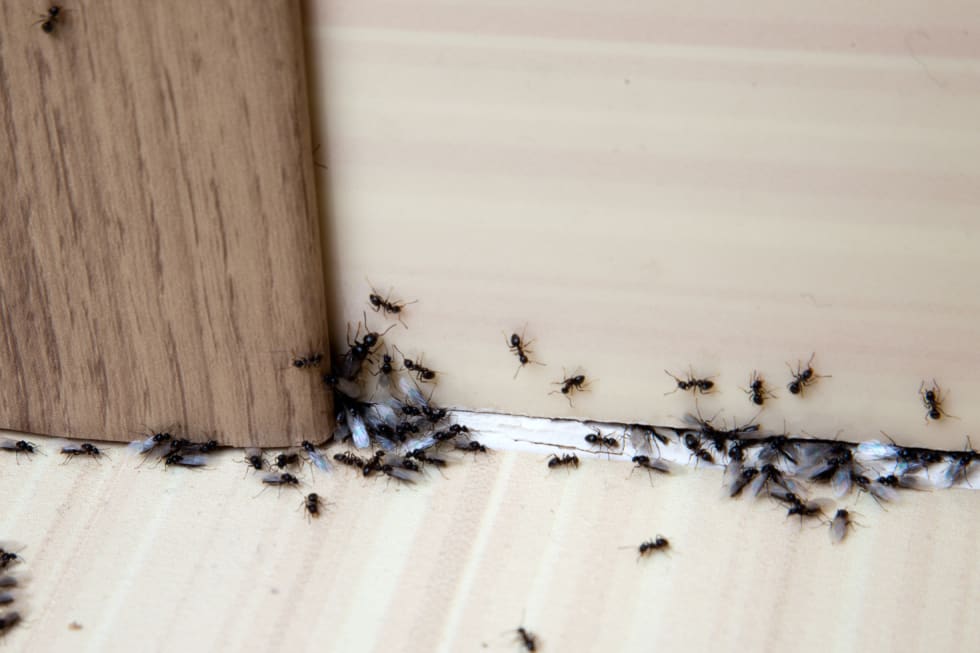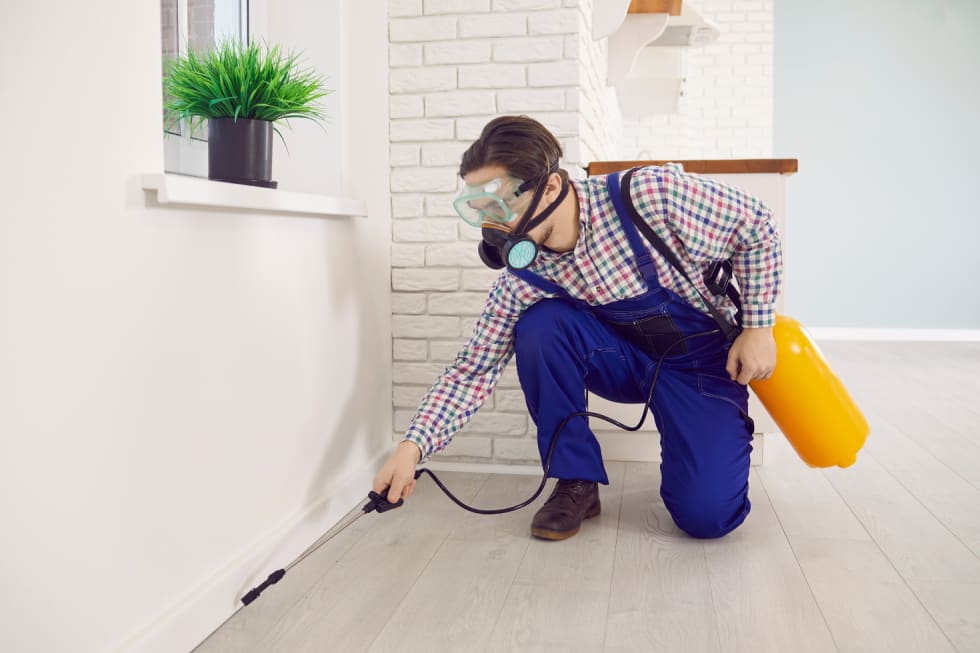How to Get Rid of Ants in Your Apartment: The Ultimate Guide
Introduction
One of the joys of renting a house is that it sometimes comes with uninvited guests - ants.
In this comprehensive guide, we’ll explore everything you need to know to identify the early signs of an ant infestation and perform effective DIY remedies, as well as when it might be time to call in the professionals.
Understanding Ant Infestations
When it comes to unwelcome guests, ants are among the most persistent. Understanding how they find their way into your apartment and recognizing the signs of their presence are crucial steps in keeping your home ant-free.
Common Entry Points
Ants are tiny, resourceful creatures that can squeeze through the smallest of openings to invade your living space. Common entry points include:
- Small cracks in walls, floors, and foundations, especially where pipes and wires enter the building.
- Gaps around windows and doors, particularly if they’re not properly sealed.
- Openings around vents, including exhaust fans or air conditioners that lead outside.
- Unknowingly through items like grocery bags, plants, or even on your pet!
Sealing these entry points with caulk or weather stripping can greatly reduce the likelihood of ants finding their way into your apartment.
Signs of an Infestation
Knowing what to look for can help you catch an ant infestation early before it becomes a larger problem. Signs include:
- Ant Trails: A line of ants marching to and from a food source is the most obvious sign.
- Soil Mounds: Small piles of soil or dirt near walls or baseboards can indicate the entrance to an ant nest.
- Sawdust Trails: Particularly with carpenter ants, you might find sawdust trails indicating their wood-burrowing activities.
- Food Gathering: If you see ants around food spills, pet food bowls, or garbage areas, it’s a clear sign of infestation.
Types of Ants in Apartments

Different types of ants may require different approaches for effective control. Common types found in apartments include:
- Carpenter Ants: Known for damaging wood, they can indicate bigger issues like moisture problems.
- Odorous House Ants (Sugar Ants): Small and dark, attracted to sweet substances.
- Argentine Ants: Light brown, they prefer to live in moist environments.
- Little Black Ants: As their name suggests, they are small and black, often found in kitchens.
- Pavement Ants: Typically found under floors or in walls, they are attracted to greasy and sweet foods.
Identifying the type of ant you’re dealing with can help you choose the most effective treatment strategy. Whether it’s sealing up entry points to prevent their entry or targeting their specific preferences with baits and deterrents, understanding your enemy is the first step towards victory.
DIY Remedies and Preventive Measures
Tackling an ant problem doesn’t always require a call to the exterminators. With some savvy DIY solutions and preventive tactics, you can create an ant-free oasis in your apartment.
Vinegar Spray: Your DIY Ant Repellent

One of the simplest yet effective methods to deter ants is using a vinegar spray. Here’s a quick guide to make your own:
- Mix Equal Parts Water and Vinegar: In a spray bottle, combine equal parts of white vinegar and water. This solution confuses ants by masking their scent trails.
- Spray Away: Target common ant entry points, such as windowsills, doorways, and other areas where you’ve noticed ant activity.
- Repeat as Necessary: While not a one-stop solution, regular application can significantly reduce ant visits.
To enhance this method, consider using Heinz Cleaning Vinegar, which is known for its higher acidity level, making it even more effective against ants. Find it here on Amazon.
Cleanliness is Key
Ants are on a never-ending quest for food. Keeping your apartment spotless can significantly reduce their interest in your space. Here are a few tips:
- Wipe Down Surfaces: Regularly clean countertops, tables, and floors to remove food residue and spills.
- Seal Food Tightly: Store pantry items and pet food in airtight containers.
- Take Out the Trash: Ensure your garbage is taken out regularly and use bins with tight-fitting lids.
Blocking Entry Points
Even the most diligent cleaning won’t help if ants can easily stroll into your apartment. Spend some time identifying and sealing potential entry points:
- Inspect and Seal: Check for cracks along windows, doors, and baseboards. Use waterproof caulk to seal any openings.
- Mind the Gaps: Don’t forget to inspect and seal gaps around cables, pipes, and any utilities entering your apartment.
Natural Repellents and Homemade Ant Killers
Beyond physical barriers and cleanliness, certain natural substances can deter or even eliminate ants:
- Essential Oils: Ants dislike the scent of peppermint and tea tree oil. Apply a few drops to cotton balls and place them at potential entry points. Explore high-quality essential oils like peppermint and tea tree oil, which are known for their natural ant-repelling properties.
- Baking Soda and Powdered Sugar: Mix equal parts of baking soda and powdered sugar and sprinkle the mixture along areas where you’ve noticed ant activity. This concoction is irresistible yet fatal to ants.
With these DIY remedies and preventive measures, you’re well-equipped to keep your apartment ant-free.
When to Escalate the Situation

So, you’ve tried all the DIY tricks in the book, from vinegar sprays to essential oil barriers, but those tiny invaders just won’t wave the white flag. When is it time to raise the alarm and call in the cavalry? Let’s navigate the when and how of escalating your ant problem to the professionals.
When to Contact Your Landlord
If you’re renting, your landlord should be your first point of contact when an ant infestation goes beyond a minor nuisance. Signs that it’s time to reach out include:
- Large nests or colonies within your apartment, especially if you spot them in multiple areas.
- Repeated infestations, despite your best efforts to clean and deploy DIY remedies.
- Visible damage to the property, such as chewed wiring or wood, which could indicate a more severe problem like carpenter ants.
Remember, landlords appreciate proactive tenants. When you report a problem, you’re helping maintain the property’s value and ensuring a healthier living environment for everyone.
Knowing When DIY Isn’t Cutting It
Sometimes, despite our best efforts, professional pest control is the only way to truly rid your space of ants. Consider calling in professionals if:
- The infestation persists even after implementing multiple DIY solutions.
- You’re dealing with a large or dangerous species of ants, such as carpenter ants, which can cause structural damage.
- You suspect there’s a larger issue, like a hidden nest within your apartment’s walls.
Communicating Effectively
When you’ve decided it’s time to seek professional help, clear communication is key. Here’s how to effectively discuss the issue:
- Document the Problem: Take photos or videos of the infestation to show the extent of the problem.
- Be Specific: Describe where the ants are entering, the types of ants (if known), and what measures you’ve already tried.
- Request a Timeline: Ask when you can expect the pest control service and any steps you should take in preparation.
The Power of a Coordinated Effort
In apartment complexes, an ant problem in one unit can quickly become an issue for the entire building. Encourage your neighbors to report any ant sightings to the landlord as well. A coordinated effort can lead to broader pest control measures, ensuring a more effective and long-term solution for everyone.
By understanding when to escalate an ant infestation and how to communicate effectively with your landlord or pest control professionals, you’re taking a crucial step towards a peaceful, ant-free living environment. Remember, there’s no shame in calling for backup when the ants just won’t quit.
Conclusion
And there you have it, folks – your ultimate guide to waving goodbye to those pesky ants for good. From the sneaky ways these tiny intruders find their way into your abode to the most effective DIY solutions and when it’s time to call in the pros, we’ve covered all the bases. Remember, the best offense is a good defense. Start with preventative measures today to keep your living space cozy and ant-free.
If you’re tired of dealing with uninvited guests in your current living space, it might be time for a fresh start in an apartment that meets all your needs. Our AI-powered apartment-finding platform is designed to connect you with your ideal rental match. Just tell us what you’re looking for in your next home, and our technology will do the rest, ensuring your new space is everything you’ve dreamed of and more. Start your search today!
FAQs
How do ants get into my apartment?
Ants can squeeze through the tiniest of openings to invade your living space. Common entry points include small cracks in walls, gaps around windows and doors, openings around vents, and even through items brought into your home like grocery bags or plants.
What are the signs of an ant infestation?
The most obvious sign of an ant infestation is witnessing ant trails - a line of ants marching to and from a food source. Other signs include small piles of soil or dirt near walls (indicating the entrance to an ant nest), sawdust trails (particularly with carpenter ants), and ants gathering around food spills, pet food bowls, or garbage areas.
What types of ants are commonly found in apartments?
Common types of ants found in apartments include Carpenter Ants, Odorous House Ants (also known as Sugar Ants), Argentine Ants, Little Black Ants, and Pavement Ants. Each type may require different approaches for effective control.
Can I get rid of ants in my apartment using DIY methods?
Yes, there are several effective DIY methods for eliminating ants from your apartment. This includes using a vinegar spray made from equal parts water and vinegar to disrupt their scent trails, maintaining cleanliness to remove food sources, sealing food tightly, and blocking entry points by caulking cracks and gaps. Natural repellents like essential oils and a mixture of baking soda and powdered sugar can also be effective.
When should I contact my landlord or seek professional pest control for an ant infestation?
You should contact your landlord if the infestation persists despite your best efforts with DIY remedies, especially if you encounter large nests or colonies within your apartment or witness repeated infestations. Professional pest control may be necessary if you’re dealing with a large or dangerous species of ants, like carpenter ants, or if you suspect there’s a larger issue, such as a hidden nest within your apartment’s walls.
How can I prevent ants from infesting my apartment in the first place?
Preventive measures include keeping your apartment clean by promptly cleaning dishes, storing food properly in sealed containers, sealing off cracks and entrance spots, and ensuring all surfaces are clean. Additionally, using natural deterrents like lemon juice, peppermint essential oil, cinnamon, and diatomaceous earth can help keep ants at bay.




